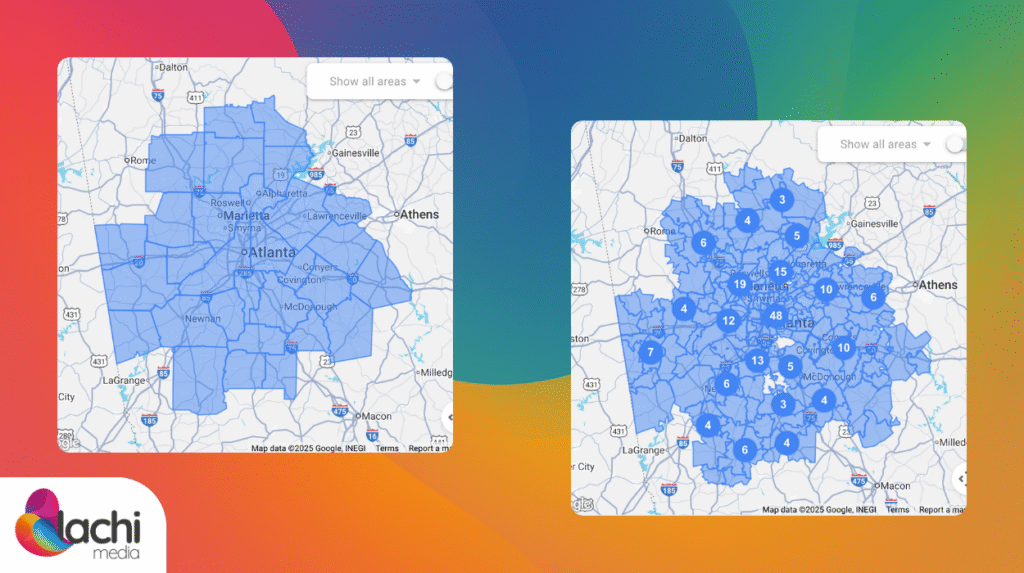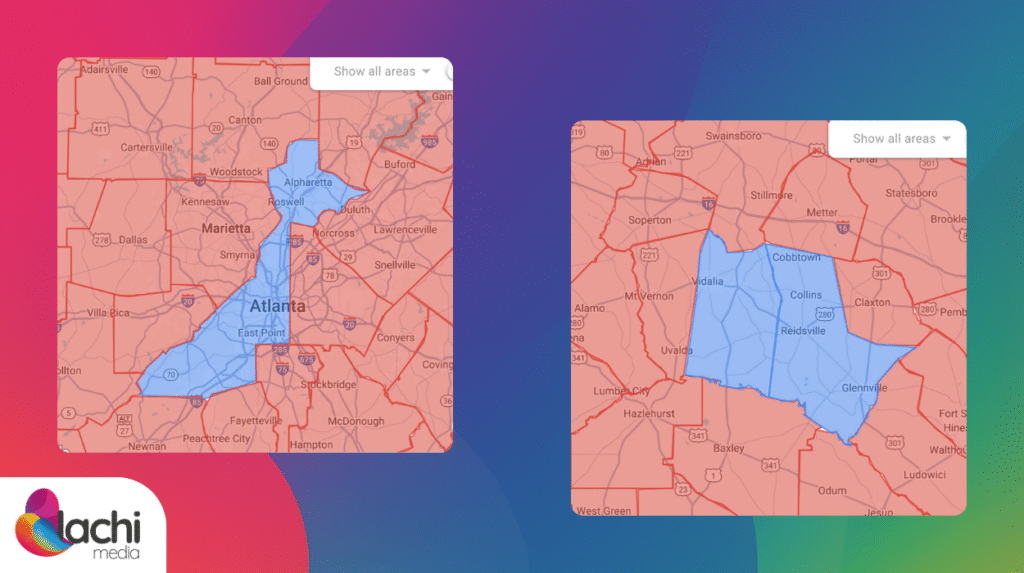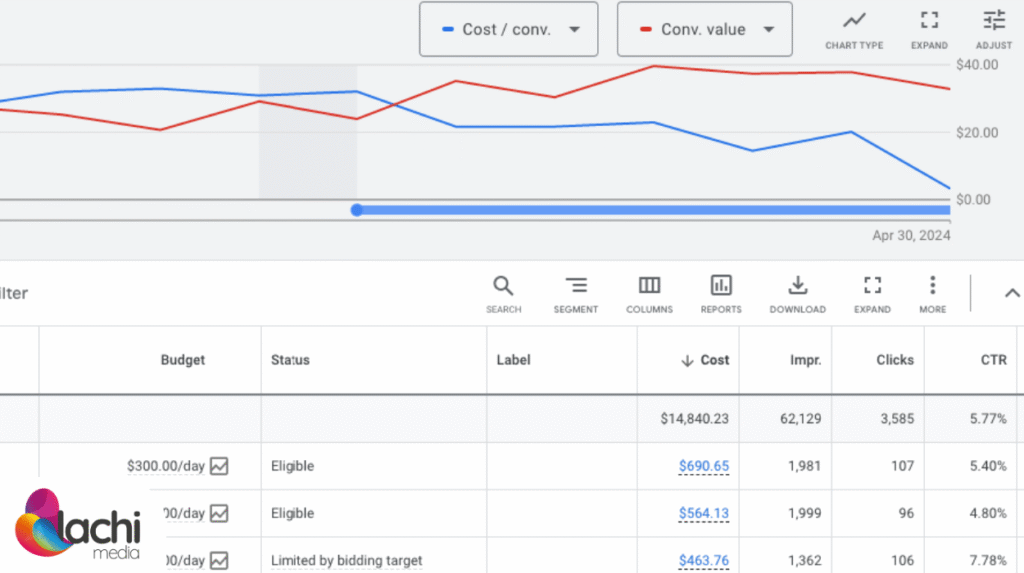Last Updated on September 19, 2025
Local services are among the most competitive industries. No matter if you’re running a garage door repair company, appliance repair, air duct, carpet cleaning service, or landscaping company, you compete with everything you’ve got. In most cases, every small improvement in your Google Ads performance translates to a huge contribution to a local business’s bottom line.
Not every single tip fits every use case or campaign, but even applying some of the tips and concepts below can drastically improve any Google Ads campaign, especially for local service companies.

Table of Contents
ToggleGoogle Ads Tips for Local Service Businesses
Some of the tips below revolve around the setup, and some around the content or creative, but every one of the tips below will help to get more out of your Google Ads (and in most cases, from Microsoft Advertising as well).
When Possible, Target Cities or Neighborhoods Instead of Zip Codes
Targeting specific zip codes is the most accurate way to define your service area, but in a test I made with over 3000 zip codes, the results were conclusive: by targeting cities instead of the zip codes that make them, you can drastically lower your CPL.
There are benefits beyond the CPL discount, such as being easier to manage and collect data, especially if you plan to divide your service areas further later on.

Split Your Service Areas to Sub Groups Based on Performance
Speaking on dividing service areas… Let’s say you target the entire Dallas metro area, including Dallas, Fort Worth, and Arlington in Texas. It would be safe to assume that different areas perform differently, even if the total amount of daily lead is shared among them.
Analyse your CPL, revenue per job, and close rate per neighborhood, and make sure that better areas are treated differently from low-converting areas.
Don’t Forget About Negative Locations
Even though you only targeted your desired location, Google can still show your ads to people outside your targeted area. This is because Google doesn’t have a strict geo-targeting option. As of today, advertisers can only target people who are usually in their targeted area or searching for their target location.
This can be somewhat confusing, but it becomes a real problem in cities like Portland (OR, ME), Arlington (VA, TX), Charleston (SC, WV), Kansas City (MO, KS), and dozens of cities around the world called Springfield, etc..
Without using negative locations, you’ll get clicks from users looking for “appliance repair in Kansas City” even if they are from Kansas, and you only target Kansas City, MO.

Play to Your Strengths – Attract Clients You Are More Likely To Acquire over Your Competitors
A vague title, I agree, but every company can take this tip from a different angle.
The obvious example would be for Spanish-speaking professionals to set up a Spanish campaign, demonstrating to potential clients they can serve them more conveniently, and in a way that most of their competition won’t be able to.
This also minimizes the competition because most advertisers won’t be able to pull it off, or just won’t think to do it.
This goes beyond the service industry. Even we, Lachi Media, found ourselves “niching down” to serve local service businesses almost exclusively because, with time, we found that our case studies in this industry make it easier for us to acquire local home service companies, and allow us to serve them at a level very few marketing agencies can.
Don’t Just Track Calls – Track Qualified Calls and Leads as Well As Paid Jobs
Most local service companies rely on tracking phone calls above a certain duration using services like CallRail ot Call Tracking Metrics. They do it to try and asses the quality of the call based in its length. Although not a bad idea, an even better idea would be to optimize for qualified calls after the person answering the phone marks it as a qualified call.
The same technology that allows reporting for qualified calls would also enable you to report a visit to a client’s house or getting paid, prioritizing monetary events over others.
As a bonus, prioritizing and reporting only qualified leads and calls will drastically help fight spam leads and prevent them from ruining your conversion data.
Distinguish Between Different Tiers of Service
This segmentation is important for managing technicians’ schedules as well as for sending different users to different pages, each with its own content.
There are four primary types of services: Maintenance, Repair, Replace (or install), and Emergency. Each “tier” of service has a different price range, and sometimes even a different team that handles it, meaning that there’s a different demand for jobs.
Split these into different campaigns, not just ad groups, so you can use different bidding strategies that would fit them and ensure you are profitable on each different tier, and not just overall.
Separate tiers in both keywords and time of day. If someone is looking for a plumber at 2 AM, you can be sure it’s an emergency call, even if the keyword doesn’t clearly state so.
Be As Relevant As You Can While Keeping Your Campaigns And Ad Groups’ Traffic Decent
There is a gentle balance between relevance in scale and overgranularity, and the more Google Ads shifts toward automated bidding strategies and broad match keywords, the harder it is to maintain this balance. The suggestions below should help you stay relevant without the constraints of running an over-granular campaign.
Use Location Dynamic Insertion in Ads
Use the {LOCATION(City):[city_name]} ad variable to detect a user’s location and insert it into the ads without splitting campaigns per city or town. Some service areas contain dozens of cities and small towns, and there’s no point in running 30 microscopic campaigns when you can achieve the same level of relevance with a dynamic parameter.
Use a Location Detection Script in Your Landing Page
For the same reason as the dynamic location insertion, you don’t want your campaign structure to be too granular to be hyper-relevant. This little code snippet can save you the need of having 20 different landing page versions, while keeping it super accurate.
Reporting Conversions with Value? Don’t be Afraid to Give Maximize Conversion Value a Shot
If you report conversions for paid jobs with monetary value, do your account a favor and test out the maximize conversion value bidding strategy.
Although primarily aimed at e-commerce stores, this bidding strategy can help you prioritize users who are more likely to become higher-paying clients than those who are most likely to only pay for the service call or receive a free inspection.
Here is a case study that shows a large-scale test comparing the maximize conversions vs the maximize conversion value bidding strategies in a lead generation campaign for a company in the local services industry.

Be Creative
We tend to go for the most obvious keywords that describe our service, but that’s what all of our competitors do.
If, for example, you run an appliance repair company, you can tell someone broke their washing machine using the usual “washer repair near me”, but you can also target users looking for new washing machines with ad creatives like “We Can Save Your Washer”.
Expect a lower CTR, but cheaper leads that most of your competitors are not fighting for. Yet…
Add More Sources to the Mix
I know you expected to only get Google Ads tips, but even if that’s all you care about, by reducing the demand from Google Ads (let’s say from 30 to 20 leads per day), you can also drastically reduce your CPL.
There are a few other advertising solutions that are a good fit for local services, like Microsoft Advertising, and some that are made specifically for local services, like Yelp Ads, Yellow Pages Advertising, and Google’s LSA. All of which are pretty simple to handle, and can help you improve your overall ROI.
Finishing Thoughts
We went over some tips and recommendations for Google Ads campaigns running in the local home service industry. Some technical, some require a bit more creativity to apply, but they are well worth the effort.
If you need help managing your Google Ads campaigns or just want a professional eye to take a look at your campaigns, send us a message, and we’ll be happy to help.